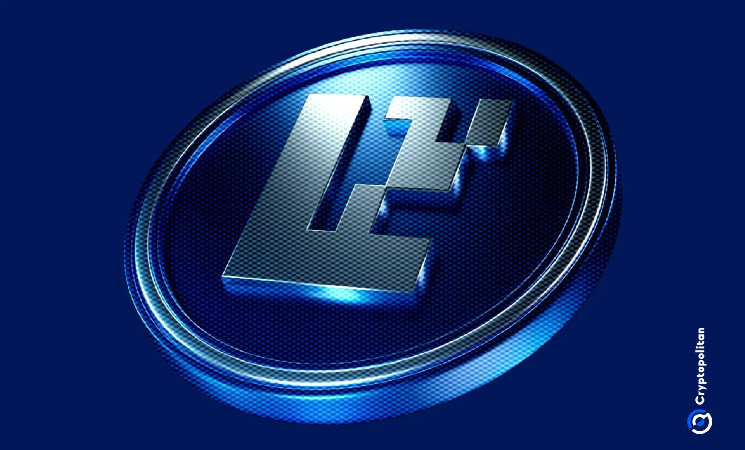وخصصت EigenLayer محفظة تبيع EIGEN بقيمة 5.5 مليون دولار في المراحل الأولى بعد فتح الرمز المميز. بدأ البيع غير المصرح به في اليومين الماضيين، من خلال مقايضات MetaMask المباشرة.
أعلنت EigenLayer عن إجراء تحقيق في المحفظة المشبوهة ، والتي أرسلت ما قيمته 5.5 مليون دولار من EIGEN. حدث البيع بعد أيام قليلة من فتح EIGEN عندما تلقت المحفظة أول تخصيص لها قدره 1,673,644.66 رمزًا مميزًا.
تحديث المجتمع
نحن نحقق في نشاط البيع غير المعتمد المرتبط بهذه المحفظة: ( https://t.co/Pp9KoTfACp ).
وسوف نشارك النتائج التي توصلنا إليها مع المجتمع في أقرب وقت ممكن.
— EigenLayer (@eigenlayer) 4 أكتوبر 2024
Along with the official message, there are also scam messages based on a fake EigenLayer security breach. Malicious links on social media are trying to drain wallets, spoofing a link that is supposed to revoke consent for EigenLayer contracts, but in fact approves a malicious contract. The effect of the sale remains limited and no other funds were threatened.
The wallet received the allocation directly from the EigenLayer treasury. Later, the tokens were liquidated for USDC, which was promptly distributed to new addresses. The seller did not even try to find a cheaper route to divest the tokens, instead choosing the convenience of the MetaMask router.
The selling happened just days after EIGEN became free to transfer and trade on exchanges. The seller is not identified as an investor in EIGEN, but this is the only class of token owner that is supposed to have the assets vested and unlocked gradually.
In this case, the seller managed to swap all of the 1.67M EIGEN through in-wallet swaps on MetaMask, with suspicions of violating the vesting schedule. The selling follows a series of transfers from early investors, who sent their freely available tokens to exchanges just hours after trading started.
EigenLayer aims to stop investors from selling
EigenLayer is trying to reassure retail investors, users, and ecosystem participants that its early backers are committed to holding EIGEN for the long term. Some early backers, like Justin Sun, cashed out early and retained a residual share.
Just before launching its token, EigenLayer updated its documentation. With this move, EigenLayer allowed investors to gain programmatic rewards and EIGEN staking rewards even though their tokens were locked and vested.
The move had to reassure retail buyers and recipients that EIGEN was safe and would not be threatened by insider selling. The appearance of a rogue whale, whose tokens were supposed to be locked, is further damaging EigenLayer’s reputation.
EIGEN is still in a stage of early price discovery, with highly active buying and selling. The inflows of another 1M EIGEN have been absorbed by the market and often matched by whales buying. However, EigenLayer seems to have lost control of its tokens after seeking a more gradual launch to avoid immediate dilution.
EIGEN achieved a market cap of around $674B in the first days after trading. The token was expected to track the trajectory of Celestia (TIA), which achieved a $1B market cap soon after trading. EigenLayer offers a similar service to Celestia, a data availability layer for L2 chains. However, the market cycle and airdrop fatigue are making EIGEN stall and slide to a lower price after its launch.
While waiting for the EIGEN token launch and trading, the EigenLayer protocol decreased its total value locked by 50% from the peak. The current TVL is just above $10B, down from $20B in May. EigenLayer aimed to position itself as a blue chip project, though it also suffered from airdrop fatigue, non-transparent distribution, and finally, recipients rushing to liquidate their tokens.
Did the whale launder stolen funds?
Investigators suggested a wild theory for the origin of the funds. EigenLayer was open for multiple stakeholders that farmed earlier airdrops. Some of the funds to stake on Eigen and receive points may originate with high-profile hacks.
One on-chain investigator suggested the funds of the UwU Lend hack were staked to receive EIGEN. In total, the wallet received $6M worth of tokens. The rapid sale incurred up to $50K in fees, but speed must have been essential for the wallet owner. The stablecoins received were then sent out to exchanges, which may offer a form of mixing to lose track of the funds.
The large-scale airdrop farmer is part of Eigen’s Sybill problem. The airdrop also revealed that EigenLayer has been farmed by crypto influencers, who were extremely quick to cash out.
The other major theory on the unauthorized swap was that the allocation belonged to a team member. There is still no final version or identity attached to the wallet.
Cryptopolitan reporting by Hristina Vasileva
